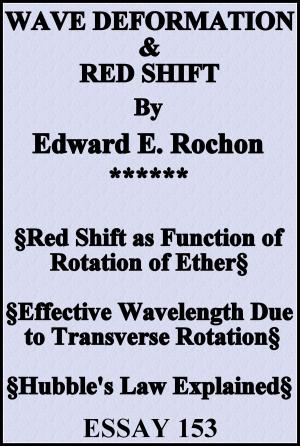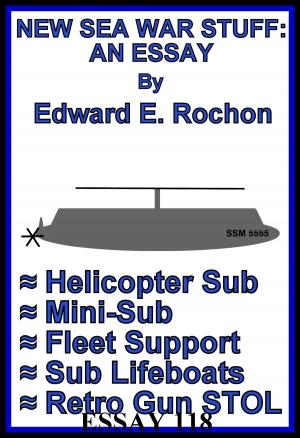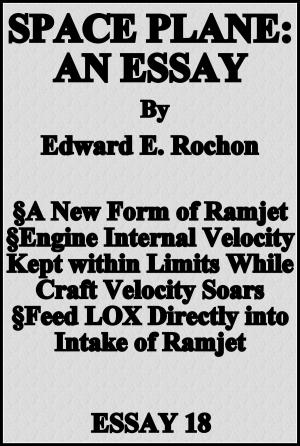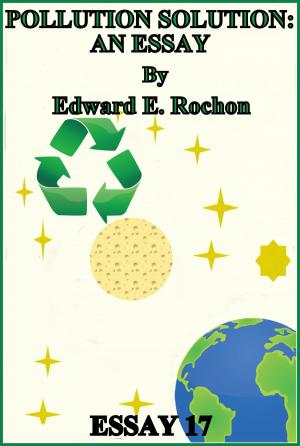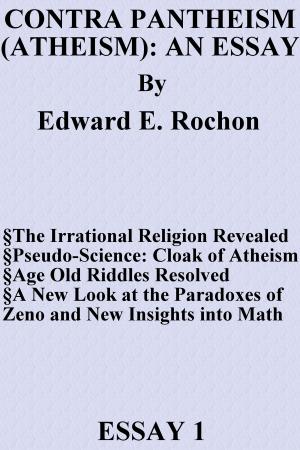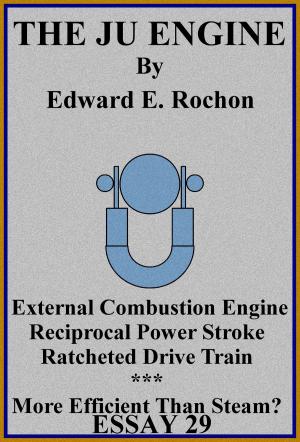| Author: | Edward E. Rochon | ISBN: | 9781370254316 |
| Publisher: | Edward E. Rochon | Publication: | November 24, 2016 |
| Imprint: | Smashwords Edition | Language: | English |
| Author: | Edward E. Rochon |
| ISBN: | 9781370254316 |
| Publisher: | Edward E. Rochon |
| Publication: | November 24, 2016 |
| Imprint: | Smashwords Edition |
| Language: | English |
A preface explains the difficulties of solar power when the sun does not shine, and what a light capacitor is, comparing it to the electrical capacitor. Chapter 1 deals with basic requirements: looping, reflection, vacuum and size. The light must move about a toroid or polygonal container. This requires mirroring of a very high quality to prevent conversion into heat. A vacuum prevents absorption and helps with maintaining a constant temperature and eliminating vibration. A large size makes for fewer reflections per distance traveled, more time in free space, and an angle of incidence closer to the tangent, away from the perpendicular, decreasing absorption and heating of mirrored surfaces that cause distortion. Large rings on flat terrain and double helices for mountainous or urban congested areas proposed that could angle up mountains or go down into the earth, inverted skyscrapers. Some comments on what light is or might be are included. Chapter 2 discusses difficulties and ways and means. The problem of dealing with the vacuum might be remedied by concentric rings of progressively lower psi (pounds per sq. inch) of air pressure. The inner loop is evacuated. The next ring has 1 psi, the next 2 psi, etc., until sea level pressure is reached. Each ring helps eliminate contamination of the loop by heat and vibration. Since light has very small wavelengths, I suggest bundling small vacuum sealed tubes within the larger loop. Each small loop supports the integrity of the other in maintaining vacuum. The four pointed star formations between the tubes would also be in a vacuum. All of this together would allow for thinner tube walls all around. Smaller surfaces are also easier to make perfectly reflective. Laser light would be best to circulate but much power is lost in conversion. Perhaps separation of sunlight by large prisms into monochrome light would be best. Different tubes would store different frequencies that could be mixed as needed upon extraction of light energy from the capacitor. Different mirroring might be suitable for different frequencies, something to look into. Everything should be done to get the highest vacuum and best reflecting surfaces. At some point, space industry could make the small inner tubing in space, sealing the ends for use down on earth. Reflecting surfaces should be as perfect as possible. Crystallization of surfaces could be considered for perfect alignment of molecules. All of this would be pointless if heat and vibrations distorted the mirroring. Besides the vacuum and bundling, placing the ring in a water conduit might buffer the ring when suspended by cables to the wall of the water conduit or aqueduct. Hot and cold water mixing would help keep the conduit water at a constant temperature. We might consider mud or powdered stone outside the water conduit to further buffer the capacitor from environmental pollutants that would distort mirror reflectivity. I make some comments on the philosophy behind current science with particular criticism of NASA, and end with some closing remarks on originality and motivations for such proposals as this.
A preface explains the difficulties of solar power when the sun does not shine, and what a light capacitor is, comparing it to the electrical capacitor. Chapter 1 deals with basic requirements: looping, reflection, vacuum and size. The light must move about a toroid or polygonal container. This requires mirroring of a very high quality to prevent conversion into heat. A vacuum prevents absorption and helps with maintaining a constant temperature and eliminating vibration. A large size makes for fewer reflections per distance traveled, more time in free space, and an angle of incidence closer to the tangent, away from the perpendicular, decreasing absorption and heating of mirrored surfaces that cause distortion. Large rings on flat terrain and double helices for mountainous or urban congested areas proposed that could angle up mountains or go down into the earth, inverted skyscrapers. Some comments on what light is or might be are included. Chapter 2 discusses difficulties and ways and means. The problem of dealing with the vacuum might be remedied by concentric rings of progressively lower psi (pounds per sq. inch) of air pressure. The inner loop is evacuated. The next ring has 1 psi, the next 2 psi, etc., until sea level pressure is reached. Each ring helps eliminate contamination of the loop by heat and vibration. Since light has very small wavelengths, I suggest bundling small vacuum sealed tubes within the larger loop. Each small loop supports the integrity of the other in maintaining vacuum. The four pointed star formations between the tubes would also be in a vacuum. All of this together would allow for thinner tube walls all around. Smaller surfaces are also easier to make perfectly reflective. Laser light would be best to circulate but much power is lost in conversion. Perhaps separation of sunlight by large prisms into monochrome light would be best. Different tubes would store different frequencies that could be mixed as needed upon extraction of light energy from the capacitor. Different mirroring might be suitable for different frequencies, something to look into. Everything should be done to get the highest vacuum and best reflecting surfaces. At some point, space industry could make the small inner tubing in space, sealing the ends for use down on earth. Reflecting surfaces should be as perfect as possible. Crystallization of surfaces could be considered for perfect alignment of molecules. All of this would be pointless if heat and vibrations distorted the mirroring. Besides the vacuum and bundling, placing the ring in a water conduit might buffer the ring when suspended by cables to the wall of the water conduit or aqueduct. Hot and cold water mixing would help keep the conduit water at a constant temperature. We might consider mud or powdered stone outside the water conduit to further buffer the capacitor from environmental pollutants that would distort mirror reflectivity. I make some comments on the philosophy behind current science with particular criticism of NASA, and end with some closing remarks on originality and motivations for such proposals as this.

